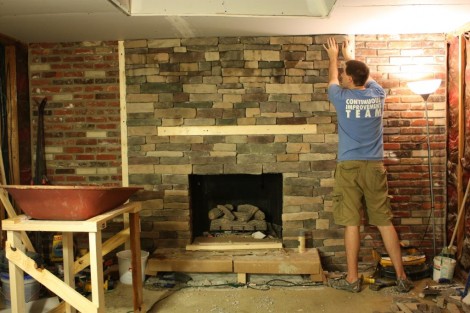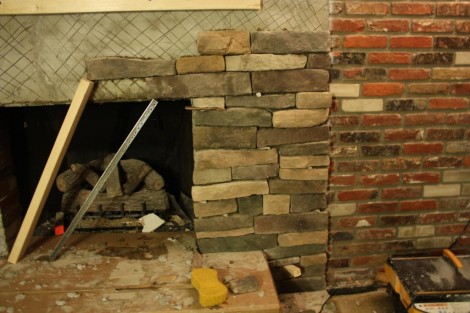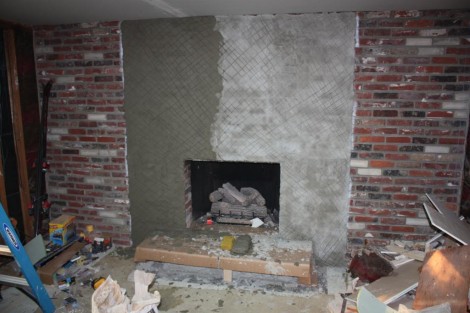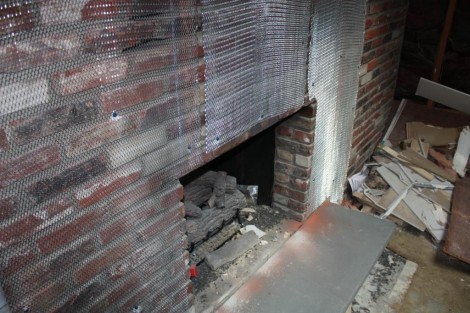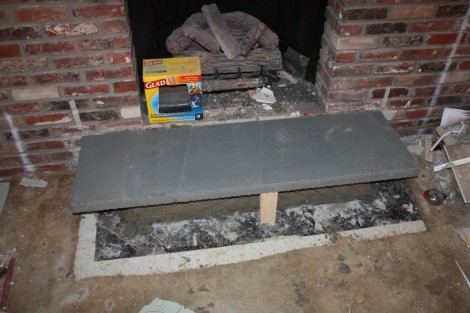The stone veneer that I’ve been talking about putting up for the last couple of posts is mostly finished now. We put the last piece for the wall up last night. I still have to put the pieces around the hearth, but that needs to be built up some more before I can do that.
Once we got past the sides it went pretty quickly, we did it in 5 sessions each only an hour or two. The last row was by far the biggest pain. Picking out the last 4 or 5 stones was espicaly difficult, since not only did they have to be just the right height, and length, but we also were running low on stones to choose from. And then to make matters worse, once we had finally gotten everything to fit, I managed to drop and break one of them.
I think it looks pretty nice, although there are one or two gaps that are a little bigger than I would like. You can also see some more in work shots over in the Gallery.
